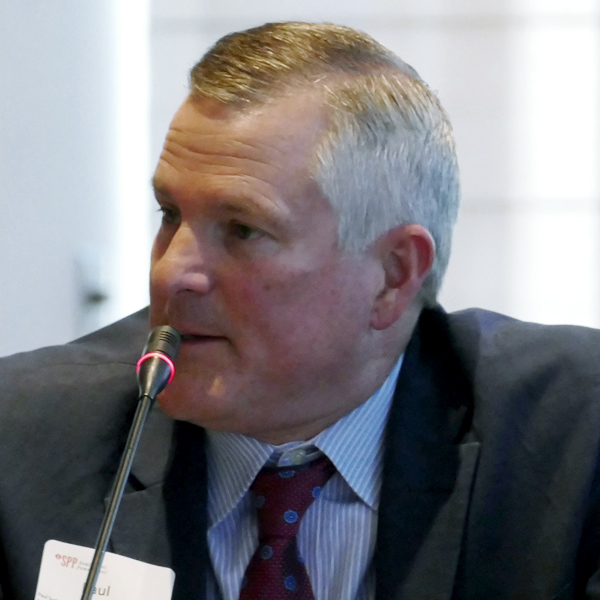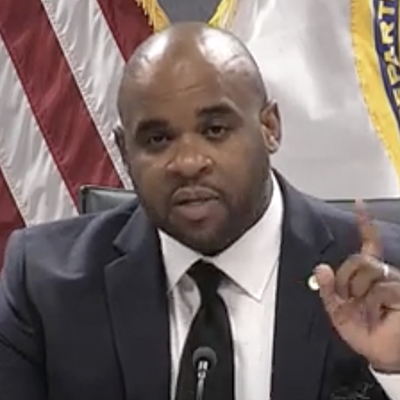ST. PAUL, Minn. — SPP legal staff said last week it is evaluating whether to modify and refile a tariff revision to allocate “byway” transmission projects on a case-by-case basis or to seek a rehearing of the order.
General Counsel Paul Suskie told the grid operator’s Regional State Committee July 24 that staff is reviewing its options following FERC’s rejection of its proposed methodology. (See FERC Reverses Course on SPP Byway Cost Plan.)
“We will do that in our ordinary course,” Suskie told the committee, composed of SPP’s state regulators. “From a timing perspective, we could probably get a result back from FERC and an approval rather than going through the appeal process.”
Asked whether SPP could work the two paths in parallel, Suskie warned the RSC that doing both at the same time would create ex parte limits when communicating with FERC.
In a July 13 order, FERC unanimously reversed a 2022 decision approving the RTO’s process to allocate byway transmission projects — facilities rated at 100 to 300 kV — after rehearing arguments raised by several SPP members. The commission rejected SPP’s proposed methodology without prejudice and dismissed a November compliance filing as moot (ER22-1846).
FERC said SPP failed to prove its proposal to regionally allocate 100% of a byway facility’s costs on a postage-stamp basis would result in outcomes that are just and reasonable and not unduly discriminatory or preferential.
The grid operator currently allocates one-third of byway projects’ cost to the RTO footprint, with customers in the transmission pricing zone where the project is built being allocated the rest. “Highway” projects — those larger than 300 kV — are allocated RTO-wide.
RSC and its Cost Allocation Working Group have been working on the issue since 2017. It was one of 21 initiatives developed by the Holistic Integrated Tariff Team before the COVID-19 pandemic. Stakeholders and staff have produced reports and white papers that led to an earlier tariff revision being rejected by FERC in 2021.
“It’s probably an understatement to say I’m disappointed to see the FERC action,” said RSC President Andrew French, with the Kansas Corporation Commission. “I do think we have an opportunity here to see if maybe there’s a better approach, maybe even an approach that could address some of the concerns in our stakeholder process and hopefully we come up with something better. This is something that we have developed an extensive record on.”
Dana Shelton, legal counsel to the Louisiana Public Service Commission, pointed out that the agency, along with those of New Mexico, Oklahoma and Texas, opposed the revision request when it came before the CAWG in December 2021. FERC Commissioner Mark Christie noted the lack of “uniform” state support for the proposal in a concurrence to the order.
“It was on what we view as illegitimate cost-allocation principle … and an unjust and unreasonable rate allocation,” Shelton said. “We do continue to have concerns along those lines. I would ask that SPP and all concerned keep that in mind.”
“It was an issue of cost allocation and equitable treatment for utilities,” Texas Commissioner Will McAdams said. “Texas shared those concerns and would stand on that position.”
McAdams Elected RSC’s Vice President
RSC members elected McAdams as their vice president. He replaces Geri Huser, who stepped down from the Iowa Utilities Board in May, four years short of her term’s expiration.
Minnesota’s John Tuma was elected to replace McAdams as the committee’s secretary and treasurer.
SPP CEO Barbara Sugg recognized McAdams during her president’s report to the board for his “exceptional leadership” of the stakeholder group addressing the RTO’s resource adequacy issues. (See SPP REAL Team Endorses Winter Resource Requirement.)
“I have heard nothing but accolades for your leadership,” she said. “I’m just so impressed with the joint nature of that group and the value that they are going to bring to the RSC, to the board, to the Members Committee, really to all SPP stakeholders.”
The RSC also approved South Dakota’s Kristie Fiegen to chair the nomination committee that will select officers for 2024. Arkansas’ Justin Tate and Oklahoma’s Todd Hiett will serve with Fiegen.

